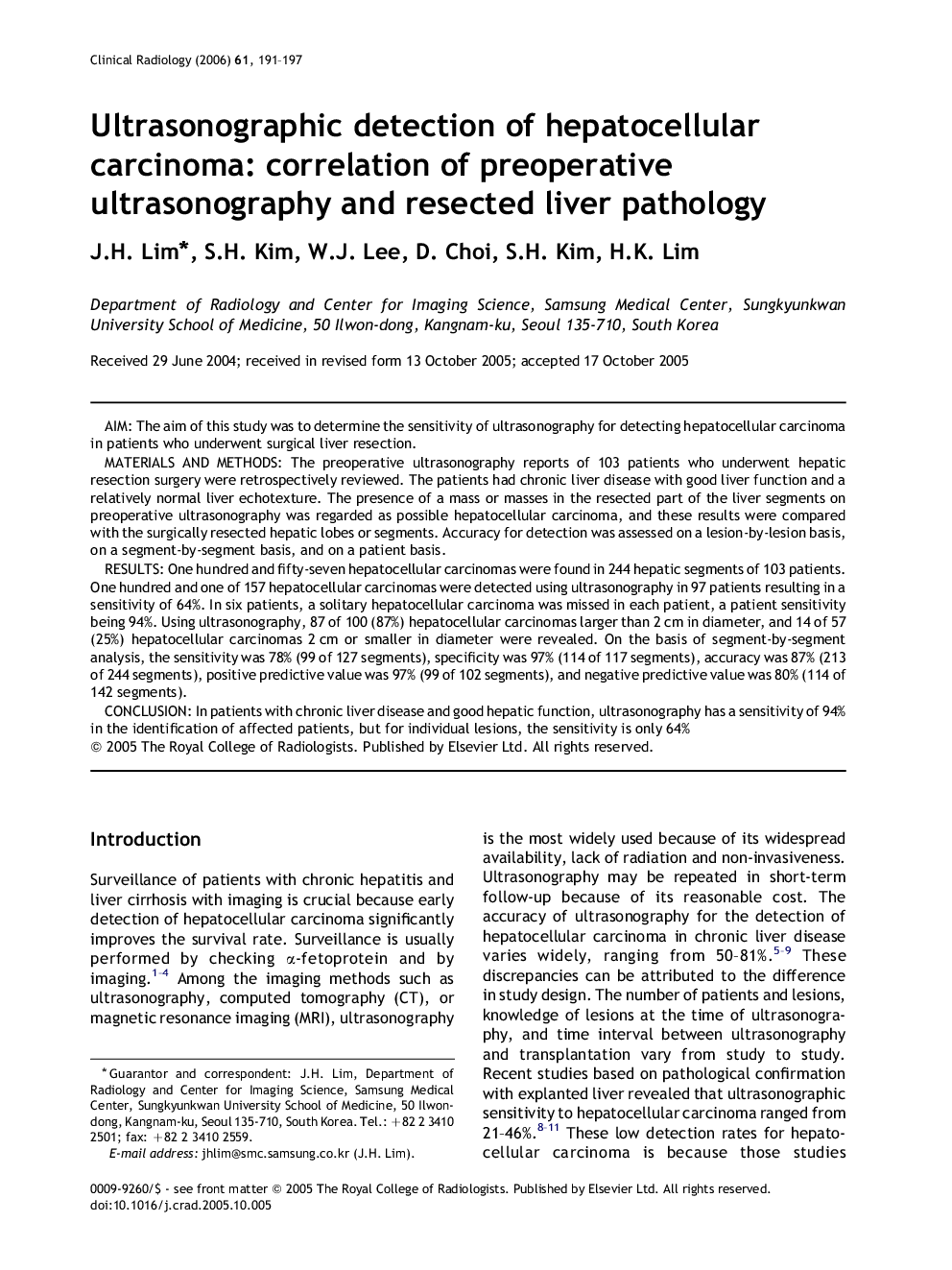| Article ID | Journal | Published Year | Pages | File Type |
|---|---|---|---|---|
| 3983965 | Clinical Radiology | 2006 | 7 Pages |
AIMThe aim of this study was to determine the sensitivity of ultrasonography for detecting hepatocellular carcinoma in patients who underwent surgical liver resection.MATERIALS AND METHODSThe preoperative ultrasonography reports of 103 patients who underwent hepatic resection surgery were retrospectively reviewed. The patients had chronic liver disease with good liver function and a relatively normal liver echotexture. The presence of a mass or masses in the resected part of the liver segments on preoperative ultrasonography was regarded as possible hepatocellular carcinoma, and these results were compared with the surgically resected hepatic lobes or segments. Accuracy for detection was assessed on a lesion-by-lesion basis, on a segment-by-segment basis, and on a patient basis.RESULTSOne hundred and fifty-seven hepatocellular carcinomas were found in 244 hepatic segments of 103 patients. One hundred and one of 157 hepatocellular carcinomas were detected using ultrasonography in 97 patients resulting in a sensitivity of 64%. In six patients, a solitary hepatocellular carcinoma was missed in each patient, a patient sensitivity being 94%. Using ultrasonography, 87 of 100 (87%) hepatocellular carcinomas larger than 2 cm in diameter, and 14 of 57 (25%) hepatocellular carcinomas 2 cm or smaller in diameter were revealed. On the basis of segment-by-segment analysis, the sensitivity was 78% (99 of 127 segments), specificity was 97% (114 of 117 segments), accuracy was 87% (213 of 244 segments), positive predictive value was 97% (99 of 102 segments), and negative predictive value was 80% (114 of 142 segments).CONCLUSIONIn patients with chronic liver disease and good hepatic function, ultrasonography has a sensitivity of 94% in the identification of affected patients, but for individual lesions, the sensitivity is only 64%
